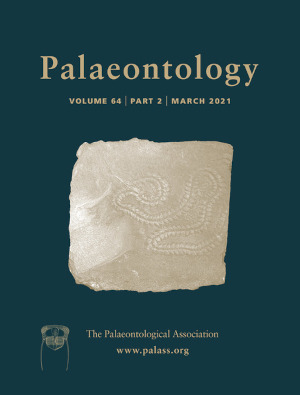Reg. Charity No. 1168330

In osteichthyans (bony fishes) the dentition is characterized by marginal tooth rows replaced by basal resorption. Basal resorption was present in the stem osteichthyan Andreolepis, which also possessed overgrowing tooth-shaped odontodes, a possible intermediate state between external odontodes and teeth. Andreolepis, however, lacked the enlarged marginal tooth rows found in more advanced osteichthyans, and how these evolved from the stem osteichthyan condition is unknown. Here we present computed tomography and synchrotron-based x-ray phase-contrast imaging of the jaws and teeth of the Early Devonian sarcopterygian Powichthys. We reveal the presence of fields of overgrowing tooth-like odontodes, resembling the dentitions of stem-group osteichthyans, alongside the marginal tooth row. In the inner dental arcade, we show a continuous variation between regions of tooth-like and external odontode-like replacement, apparently driven by variations in the relative rates of bone growth, odontode addition and odontode size. These results suggest that there is a degree of plasticity in oral odontode development. We propose that the tooth rows of crown osteichthyans develop in an essentially similar manner to the teeth of stem osteichthyans, with differences explained by increased resorption activity linked to the larger size of the teeth. Therefore, the external odontodes and teeth of both stem and crown osteichthyan lie on the same developmental continuum.
AcknowledgementsWe thank Alexander Gehler of the Geoscience Centre of the University of Göttingen (GZG) for loan of Powichthys specimens, Mark Doeland, Olga Otero and François Meunier for access to comparative CT data, Bertie-Joan van Heuven and Rob Langelaan (Naturalis) for CT scanning and Aidan Couzens, Michael Coates and Phil Donoghue for critically reading an earlier version of the manuscript. We acknowledge the Paul Scherrer Institut, Villigen, Switzerland for provision of synchrotron radiation beamtime at the TOMCAT beamline X02DA of the SLS. This work was supported by NWO Vidi grant 864.14.009 to MR. Jorge Mondéjar Fernández, Per Ahlberg, Donglei Chen and an additional anonymous reviewer commented on an earlier version of the manuscript.